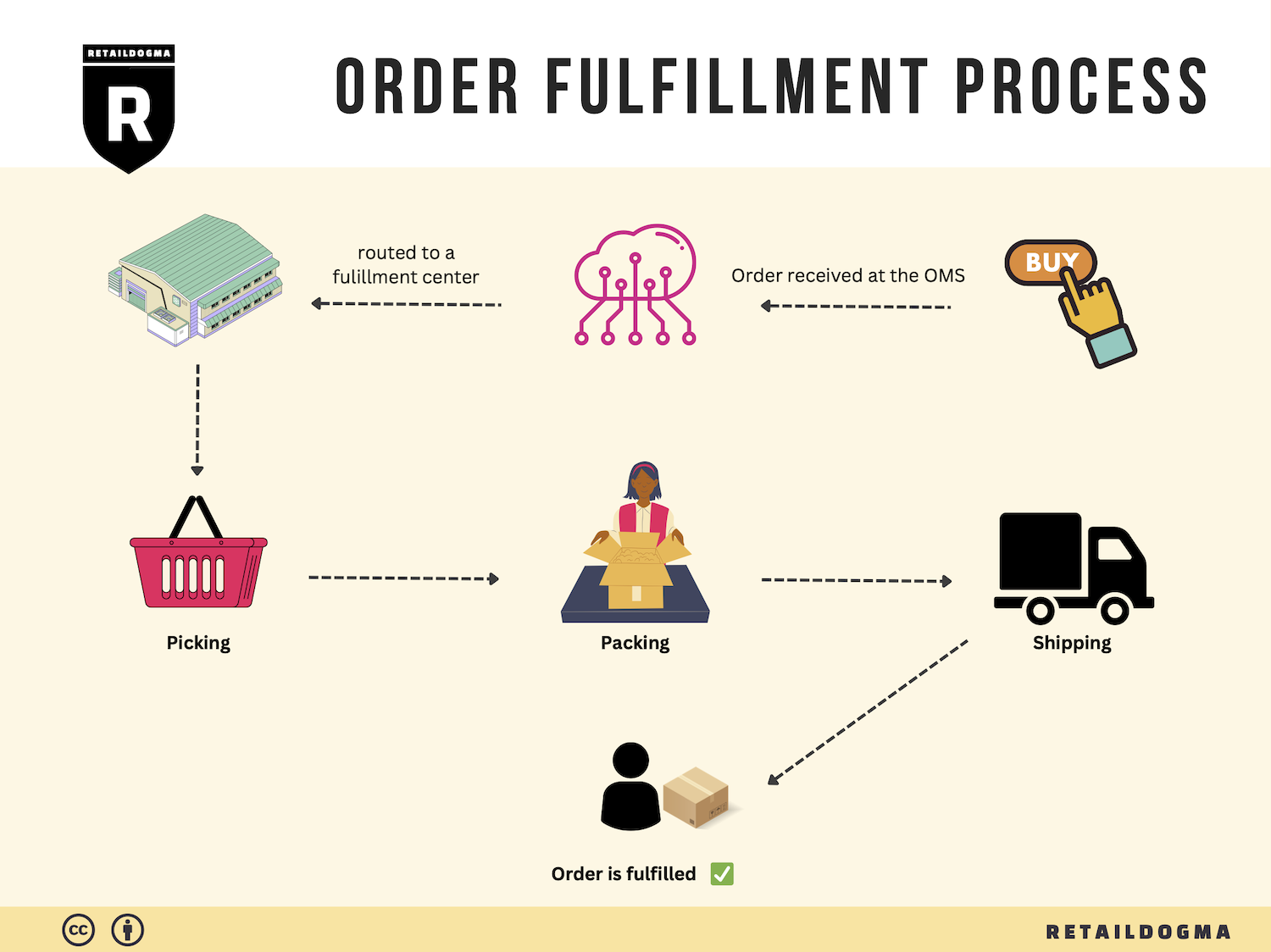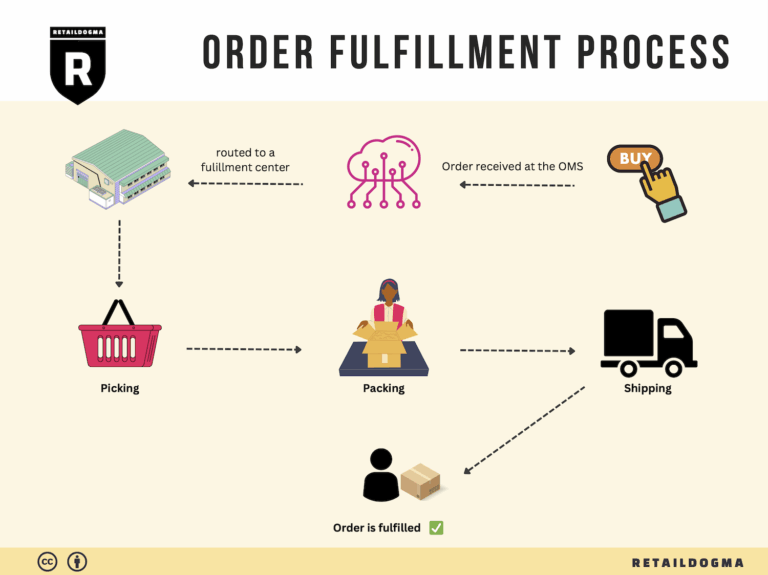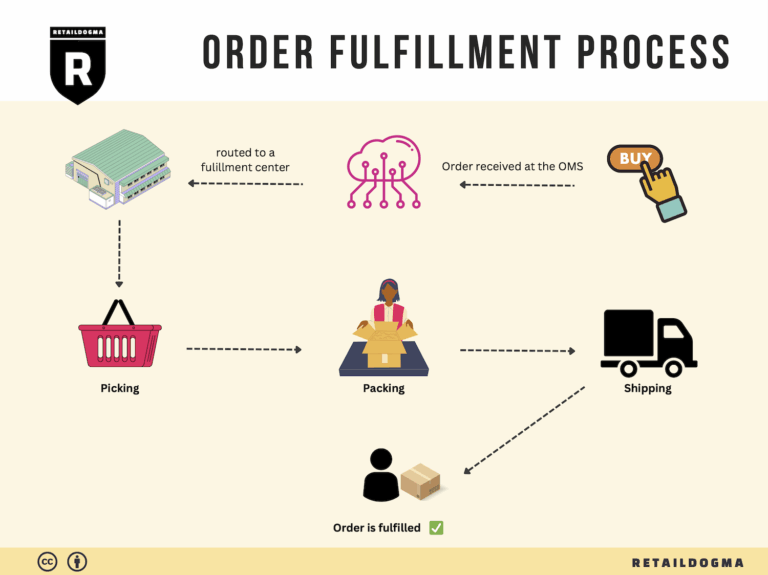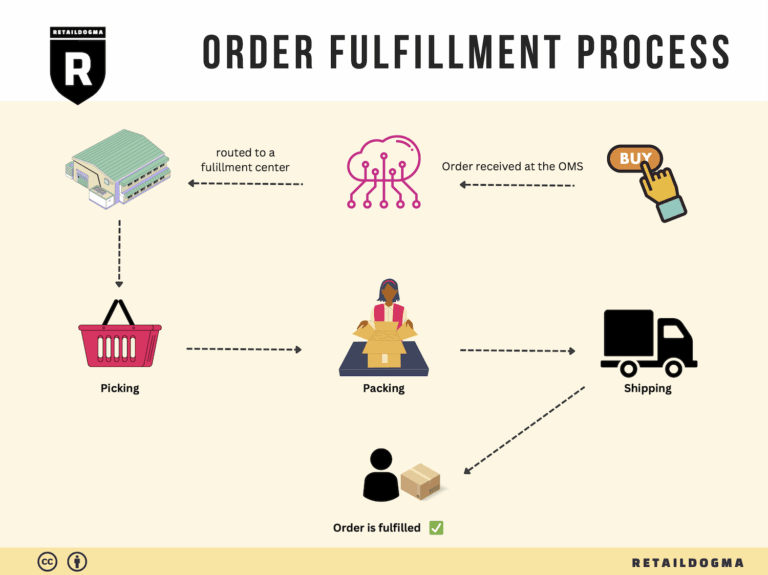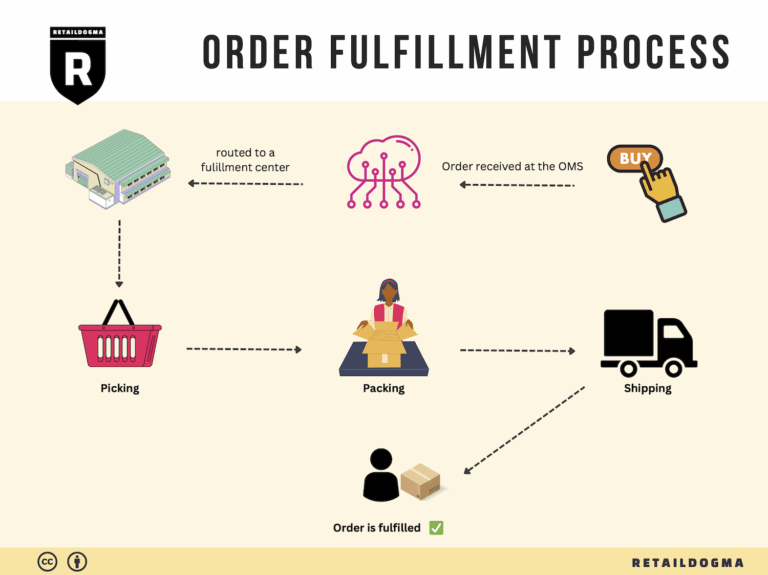Ecommerce Fulfillment Services: The Ultimate Guide (2025)
What is E-commerce Fulfillment? An Introduction for Growing Businesses
Understanding E-commerce Fulfillment for Growing Businesses
As an e-commerce business owner, you may find yourself overwhelmed with the complexities of packing and shipping orders. Managing inventory, ensuring timely deliveries, and keeping customers satisfied can quickly become a daunting task, especially as your sales begin to scale. This is where e-commerce fulfillment comes into play. Simply put, fulfillment is the process of getting a product from your inventory to your customer’s doorstep. It encompasses everything from warehousing and order processing to packing and shipping.
In this guide, we will explore various fulfillment models that can help streamline your operations. One of the most popular methods is Fulfillment by Amazon (FBA), where Amazon takes care of storage, packaging, and shipping for you. Alternatively, you may consider partnering with a Third-Party Logistics (3PL) provider, which can offer customized fulfillment solutions tailored to your specific business needs.
We will also discuss the core services that fulfillment providers offer, including inventory management, order tracking, and customer service support. Understanding these services will enable you to select a partner that aligns with your business goals and can scale alongside you.
Choosing the right fulfillment partner is crucial for your business’s success. Factors such as location, technology integration, and service level agreements (SLAs) should be carefully considered. This guide will provide you with practical tips on how to evaluate potential partners to ensure they can meet your operational requirements and customer expectations.
Additionally, we will delve into pricing structures associated with fulfillment services. Understanding the cost implications of different models will empower you to make informed decisions that can enhance your profitability while maintaining a high level of service.
The ultimate goal of this guide is to equip you with the knowledge needed to make smart decisions about your logistics strategy. As you navigate the complexities of e-commerce fulfillment, the insights provided here will help you streamline your operations, improve customer satisfaction, and scale your business effectively. Whether you’re just starting out or looking to optimize your existing processes, this guide will serve as a valuable resource on your journey to e-commerce success.
What You’ll Learn In This Guide
- What is E-commerce Fulfillment? An Introduction for Growing Businesses
- The Order Fulfillment Process: From ‘Buy’ Button to Customer’s Door
- Comparing Fulfillment Models: In-House vs. 3PL vs. Dropshipping
- A Deep Dive into Amazon FBA: Pros, Cons, and Who It’s For
- Core Services Offered by Fulfillment Centers
- How to Choose a Fulfillment Partner: A 6-Point Checklist
- Understanding Fulfillment Pricing: A Breakdown of Common Fees
- Frequently Asked Questions (FAQs) about Fulfillment
- Conclusion: Is Outsourcing Fulfillment the Right Move for Your Business?
- Important Disclaimer
The Order Fulfillment Process: From ‘Buy’ Button to Customer’s Door
1. Receiving Inventory
The order fulfillment process begins with receiving inventory at the fulfillment center. This step involves checking incoming shipments against purchase orders to ensure the correct quantities and product types are received. Each product is typically assigned a Stock Keeping Unit (SKU), a unique identifier that helps track inventory accurately.
Importance: Proper receiving is crucial as it lays the foundation for all subsequent steps in the fulfillment process. Inaccurate receiving can lead to stock discrepancies, fulfillment delays, and ultimately customer dissatisfaction. By verifying shipments upon arrival, businesses can ensure they have the necessary products to meet customer demand.
Key Term: SKU (Stock Keeping Unit) – A unique identifier for each product that aids in tracking and inventory management.
2. Warehouse Storage
Once the inventory has been received and verified, it is then stored in designated areas within the warehouse. Efficient warehouse storage strategies, such as using shelving systems or pallets, are employed to maximize space and facilitate easy access to products.
Importance: Effective storage is vital for maintaining an organized warehouse. A well-organized storage system enhances the speed of order fulfillment by reducing the time it takes to locate items. Additionally, proper storage practices help prevent damage and loss, thereby ensuring product quality.
Key Term: FIFO (First In, First Out) – An inventory management method that ensures older stock is sold before newer stock, reducing the risk of obsolescence and spoilage.

3. Order Picking
When a customer places an order, the next step is order picking. This involves selecting the correct items from the warehouse based on the order details. Warehouse staff often use pick lists, which outline the items and quantities needed for each order, guiding them through the picking process.
Importance: Order picking is one of the most critical steps in the fulfillment process. Errors in picking can lead to incorrect orders, resulting in returns, refunds, and customer dissatisfaction. Streamlining the picking process through efficient layout and technology, such as barcode scanners, can significantly enhance accuracy and speed.
Key Term: Pick List – A document or digital tool that lists the items to be picked for a specific customer order, aiding in accuracy and efficiency during the picking process.
4. Order Packing
After items are picked, they move on to the packing stage. Here, products are carefully packed into boxes or envelopes, ensuring they are protected during transit. This step often includes labeling the packages with shipping information and adding any necessary documentation, such as invoices or return instructions.
Importance: Proper packing is essential for preventing damage during shipping and ensuring that the order arrives in good condition. Additionally, accurate labeling helps facilitate smooth delivery and reduces the chances of lost packages. Effective packing practices also contribute to customer satisfaction, as a well-presented package enhances the unboxing experience.
Key Term: Packing Slip – A document included in the package that lists the items enclosed, serving as a confirmation of what has been shipped.

5. Shipping & Delivery
The final step in the order fulfillment process is shipping and delivery. Once packed, orders are dispatched to shipping carriers for delivery to the customer. Businesses often use multiple carriers to optimize shipping costs and delivery times, and tracking information is usually provided to customers for real-time updates on their order status.
Importance: Timely and reliable shipping is crucial for customer satisfaction and can significantly influence repeat business. Efficient shipping practices ensure that products reach customers quickly and in good condition, fostering trust and loyalty. Additionally, offering various shipping options can cater to different customer preferences, enhancing the overall shopping experience.
Key Term: Tracking Number – A unique identifier assigned to a shipment that allows customers to monitor the progress of their delivery in real-time.
In conclusion, understanding and optimizing each step of the order fulfillment process is essential for e-commerce businesses aiming to scale. From receiving inventory to ensuring timely delivery, each stage plays a pivotal role in customer satisfaction and operational efficiency. By implementing best practices and leveraging technology, businesses can enhance their fulfillment operations and ultimately drive growth.
Comparing Fulfillment Models: In-House vs. 3PL vs. Dropshipping
Fulfillment Model Comparison Table
| Model | Who Handles Inventory | Best For (Business Stage) | Key Advantage | Key Disadvantage |
|---|---|---|---|---|
| In-House Fulfillment | The Business Itself | Established Businesses | Full control over inventory and operations | High overhead costs and resource demands |
| Third-Party Logistics (3PL) | 3PL Provider | Growing Businesses | Scalability and access to logistics expertise | Less control over inventory and fulfillment speed |
| Dropshipping | Supplier | Startups and Small Businesses | Low overhead and no inventory risk | Lower profit margins and reliance on suppliers |
In-House Fulfillment
In-house fulfillment involves managing the entire inventory and order processing internally. This model is best suited for established businesses that have the resources to handle logistics and warehousing. The key advantage of in-house fulfillment is the full control it provides over inventory, operations, and customer service. Businesses can manage their stock levels closely, respond quickly to demand changes, and ensure quality control. However, this model comes with significant overhead costs, including warehousing, staffing, and technology investments. As businesses scale, the complexity of managing logistics can also increase, leading to potential inefficiencies and bottlenecks. Therefore, while in-house fulfillment can provide a high level of service and control, it may not be sustainable for businesses looking to scale rapidly without incurring substantial costs.
Third-Party Logistics (3PL)
Third-party logistics (3PL) involves outsourcing logistics operations to a specialized provider. This model is ideal for growing businesses that require scalability without the burden of managing logistics in-house. By partnering with a 3PL provider, businesses can leverage their expertise in warehousing, transportation, and inventory management. The primary advantage of 3PL is the ability to scale operations quickly; businesses can adjust their logistics capabilities based on demand without significant capital investment. Additionally, 3PL providers often have established networks and technology that can enhance efficiency and reduce shipping times. However, the downside is that businesses relinquish some control over their inventory and fulfillment processes. This can lead to challenges in maintaining service quality and responsiveness, particularly if the 3PL provider does not align with the business’s standards. Therefore, while 3PL offers flexibility and scalability, businesses must carefully select partners to ensure alignment with their operational goals.
Dropshipping
Dropshipping is a fulfillment model where the retailer does not hold inventory but instead relies on suppliers to ship products directly to customers. This model is particularly appealing to startups and small businesses due to its low overhead and reduced financial risk. The primary advantage of dropshipping is that businesses can operate without the need for significant upfront investment in inventory. This allows entrepreneurs to test new products and markets with minimal risk. However, dropshipping also has its disadvantages, including lower profit margins and a heavy reliance on suppliers for product quality and shipping times. Since the retailer does not control the inventory or fulfillment process, any issues with suppliers can directly impact customer satisfaction. Additionally, dropshipping can lead to longer shipping times, especially if suppliers are located overseas. For businesses considering this model, it is crucial to establish strong relationships with reliable suppliers and maintain clear communication to mitigate potential issues.
Conclusion
Choosing the right fulfillment model is critical for e-commerce businesses looking to scale effectively. In-house fulfillment provides control but requires substantial resources. Third-party logistics offer flexibility and expertise, which can be advantageous for growth, while dropshipping allows for low-risk entry into the market. Each model has its unique benefits and challenges, and the decision should align with the business’s current stage, resources, and long-term goals. Understanding these dynamics will enable business owners to make informed decisions that support their growth strategies and enhance operational efficiency.
A Deep Dive into Amazon FBA: Pros, Cons, and Who It’s For
Understanding Fulfillment by Amazon (FBA)
Fulfillment by Amazon (FBA) is a service provided by Amazon that allows businesses to outsource their order fulfillment to Amazon’s vast logistics network. This service enables sellers to store their products in Amazon’s fulfillment centers, where Amazon takes care of storage, packaging, and shipping directly to customers. This means that when a customer places an order, Amazon handles everything from picking the product off the shelf to shipping it and providing customer service.
How FBA Works
-
Setup: Sellers create an Amazon seller account and enroll in the FBA program. They then prepare their products according to Amazon’s guidelines, which may include labeling and packaging requirements.
-
Shipping Inventory: After preparation, sellers ship their products to one or more of Amazon’s fulfillment centers. Amazon has over 1,300 fulfillment centers globally, making it easier for businesses to reach a wide audience quickly.
-
Storage: Once the inventory arrives at Amazon’s warehouse, it is stored until sold. Sellers can monitor their inventory levels through their Amazon seller dashboard.
-
Order Processing: When a customer orders a product, Amazon’s system automatically processes the order. The product is picked from the inventory, packed, and shipped directly to the customer.
-
Customer Service: Amazon also handles customer inquiries and returns, which alleviates a significant burden from sellers.
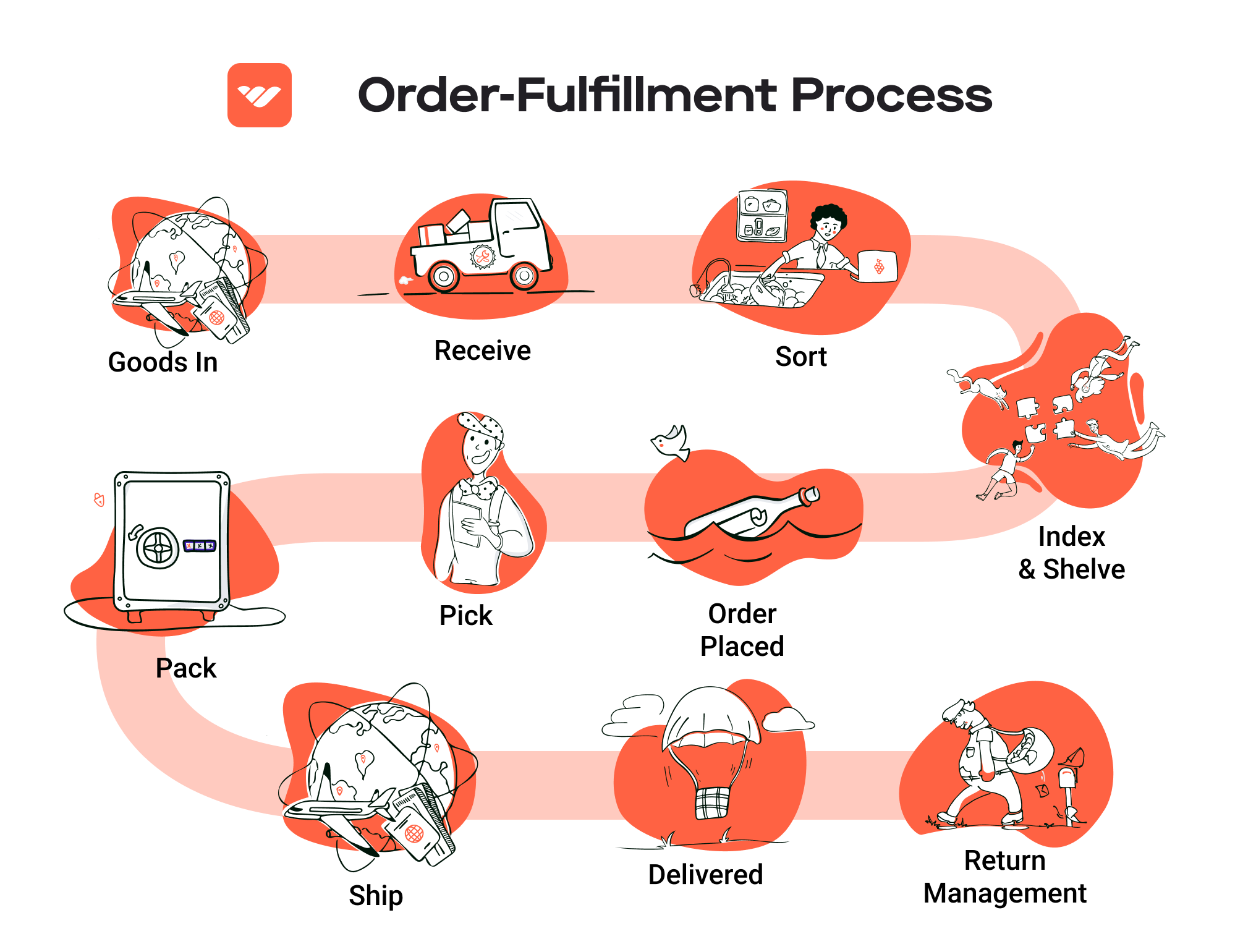
-
Fees: In exchange for these services, sellers pay various fees, including storage fees for the inventory stored in Amazon’s warehouses and fulfillment fees for each order processed.
Pros of Amazon FBA
Prime Eligibility
One of the most significant advantages of FBA is that products become eligible for Amazon Prime. This means that Prime members can receive their orders with free two-day shipping, significantly enhancing the attractiveness of the products and potentially increasing sales. With millions of Prime subscribers, this feature can lead to higher visibility and conversion rates.
Customer Trust
Amazon is a trusted name in e-commerce. By using FBA, sellers leverage Amazon’s reputation, which can help boost customer confidence in their products. Customers often prefer buying from sellers that fulfill through Amazon due to the assurance of reliable service, quick shipping, and straightforward return policies.
Multi-Channel Fulfillment
FBA isn’t limited to Amazon.com. Sellers can use FBA to fulfill orders from other sales channels, such as their own e-commerce websites or platforms like eBay. This flexibility allows businesses to streamline their operations and manage inventory from a single source while still reaching customers on multiple platforms.
Cons of Amazon FBA
High Fees
While FBA offers many benefits, sellers must consider the associated costs. FBA fees can add up quickly, including storage fees for inventory and fulfillment fees for each order shipped. These fees can eat into profit margins, especially for low-cost items. Sellers need to carefully calculate their pricing strategy to ensure that they remain profitable.
Strict Inventory Rules
Amazon has strict guidelines regarding inventory management. Sellers must adhere to these rules or risk facing penalties or having their inventory removed. This includes limits on the number of units they can send to Amazon and requirements for product condition, labeling, and packaging. Failure to comply can lead to additional fees or loss of inventory.
Commingling Risks
When products are commingled, they are mixed with inventory from other sellers, meaning that the seller cannot guarantee that their products will be shipped to customers. This can lead to issues with counterfeit products or returns of items that were not sold by the original seller. While Amazon has implemented measures to minimize these risks, they remain a concern for many sellers.
Who is FBA Best For?
FBA is particularly well-suited for:
-
Small to Medium-Sized Businesses: Companies that lack the resources or infrastructure to handle fulfillment and customer service in-house can greatly benefit from FBA. It allows them to focus on product development and marketing while Amazon manages logistics.
-
E-commerce Entrepreneurs: New sellers can take advantage of Amazon’s massive audience and logistics capabilities without the need for significant upfront investments in warehousing and fulfillment.
-
Sellers with High Volume Sales: Businesses with a high turnover of inventory can benefit from the economies of scale that FBA provides, making it easier to manage logistics without overwhelming operational complexities.
-
Brands Seeking Exposure: Brands that want to increase their visibility and reach on Amazon can leverage FBA to enhance their sales potential, especially if they wish to tap into Prime members.
In conclusion, while Amazon FBA offers numerous advantages, it is crucial for sellers to weigh these against the associated costs and operational challenges. Understanding the nuances of FBA can empower e-commerce businesses to make informed decisions about their fulfillment strategies, ultimately leading to scalable growth and improved customer satisfaction.
Core Services Offered by Fulfillment Centers
Inventory Management & Warehousing
Effective inventory management and warehousing are foundational to any successful e-commerce operation. Fulfillment centers provide businesses with a dedicated space to store their products in a controlled environment. This service encompasses everything from receiving goods from suppliers to tracking stock levels and ensuring that products are stored safely and efficiently.
Benefits:
1. Optimized Space Utilization: Fulfillment centers typically employ advanced inventory management systems that maximize storage efficiency, allowing businesses to store more products in less space. This is especially beneficial for small to medium-sized enterprises (SMEs) that may not have the resources to maintain their own warehouse.
-
Real-Time Inventory Tracking: Most fulfillment centers utilize sophisticated software that provides real-time inventory tracking. This enables e-commerce businesses to have accurate visibility of stock levels, reducing the risk of overstocking or stockouts, which can lead to lost sales.
-
Scalability: As your e-commerce business grows, so too can your inventory needs. Fulfillment centers offer scalable solutions that allow you to easily increase your storage capacity without the complexities associated with expanding your own warehouse.
-
Cost Efficiency: By outsourcing inventory management and warehousing, businesses can lower overhead costs related to staffing, utilities, and maintenance. This allows for more budget flexibility to invest in other areas, such as marketing or product development.
Pick and Pack Services
Pick and pack services are integral to the order fulfillment process. This service involves selecting items from inventory (picking) and then packaging them for shipment (packing). Fulfillment centers streamline this process through efficient workflows and trained staff.
Benefits:
1. Speed and Accuracy: Fulfillment centers are equipped with optimized picking systems that reduce the time taken to fulfill orders. This results in faster shipping times and improved customer satisfaction, which is crucial in today’s competitive e-commerce landscape.
-
Quality Control: Many fulfillment centers implement quality control checks during the picking and packing process to ensure that the correct items are shipped in the right condition. This minimizes the chances of returns due to errors, enhancing customer trust and loyalty.
-
Custom Packaging Options: Fulfillment centers often provide various packaging solutions tailored to the needs of the business and its products. This could include branded packaging or eco-friendly options, allowing businesses to present a professional image and meet customer preferences.
-
Integration with E-commerce Platforms: Most fulfillment centers offer integrations with popular e-commerce platforms, making it easy for businesses to automate order processing. This reduces manual errors and saves valuable time that can be redirected towards other strategic initiatives.
Kitting and Assembly
Kitting and assembly services involve the grouping of individual items into ready-to-sell sets or kits. This is particularly useful for businesses that sell products that are often purchased together or require assembly before they can be sold.
Benefits:
1. Enhanced Product Offerings: By offering product bundles or kits, businesses can create unique value propositions that can attract more customers. This not only increases the average order value but also simplifies the buying process for customers.
-
Streamlined Operations: Kitting allows businesses to streamline their inventory management by reducing the number of individual SKUs. This can lead to lower carrying costs and simplified logistics, as fewer items need to be managed and tracked.
-
Time-Saving: Fulfillment centers can handle the labor-intensive process of assembling kits, freeing up internal resources for other critical tasks. This can lead to greater overall operational efficiency, especially during peak sales seasons.
-
Customization Options: Many fulfillment centers offer customizable kitting solutions, allowing businesses to create personalized kits for promotions or special events. This flexibility can enhance customer engagement and drive sales.
Returns Management (Reverse Logistics)
Returns management, or reverse logistics, is the process of handling returned products. Fulfillment centers play a vital role in this area by managing the entire returns process efficiently and effectively.
Benefits:
1. Simplified Returns Process: By outsourcing returns management to a fulfillment center, businesses can offer a seamless returns process for customers. This includes issuing return labels, processing returns, and restocking items, which can significantly enhance customer satisfaction.
-
Data Insights: Fulfillment centers can provide valuable data on return reasons, trends, and patterns. Analyzing this data can help businesses identify issues with products, improve quality, and reduce return rates, leading to better customer experiences.
-
Cost Reduction: Efficient returns management can minimize costs associated with handling returns, such as restocking fees or lost inventory. By optimizing this process, businesses can retain more revenue and improve their bottom line.
-
Focus on Core Competencies: Managing returns can be resource-intensive. By outsourcing this function, businesses can focus on their core competencies, such as product development and customer engagement, ultimately driving growth.
In conclusion, partnering with a fulfillment center offers e-commerce businesses a multitude of services that streamline operations, enhance customer satisfaction, and support growth. By leveraging these core services, businesses can optimize their logistics and focus on scaling their operations effectively.
How to Choose a Fulfillment Partner: A 6-Point Checklist
Location & Warehouse Network
When selecting a fulfillment partner, the location of their warehouses is crucial. The proximity to your customer base can significantly impact shipping times and costs, which are critical factors in customer satisfaction.
Questions to Ask:
– Where are your fulfillment centers located?
– How do your locations align with my target markets?
– What is your average shipping time to major cities?
– Do you have a strategy for optimizing shipping routes?
Technology & Integrations
In today’s fast-paced e-commerce environment, robust technology and seamless integrations with your existing systems (like your e-commerce platform, inventory management software, and accounting systems) are essential. A fulfillment partner that leverages advanced technology can provide real-time inventory tracking, automated order processing, and enhanced data analytics.
Questions to Ask:
– What technology platforms do you use for order management and tracking?
– Can your systems integrate with my existing e-commerce and ERP systems?
– Do you offer real-time reporting and analytics?
– How do you handle system updates and maintenance?
Specializations (e.g., Cold Storage, Oversized Items)
Different businesses have unique fulfillment needs. If you sell specialized products, such as perishables that require cold storage or oversized items that need special handling, it’s vital to partner with a fulfillment center that has the necessary capabilities.
Questions to Ask:
– What types of products do you specialize in handling?
– Do you have facilities for temperature-sensitive items?
– How do you manage the storage and shipping of oversized products?
– Can you provide case studies or references for businesses with similar needs?
Scalability & Capacity
As your business grows, your fulfillment partner should be able to scale operations accordingly. A partner with flexible solutions can accommodate seasonal spikes in demand, new product launches, and geographic expansions without compromising service quality.
Questions to Ask:
– How do you handle fluctuations in order volume?
– What is your capacity for scaling operations, and how quickly can you do so?
– Do you have a plan in place for seasonal demand surges?
– How do you ensure that your fulfillment processes remain efficient as order volumes increase?
Pricing and Contracts
Understanding the pricing structure and contract terms is essential to avoid unexpected costs and ensure that the partnership aligns with your budget and financial goals. Transparent pricing models help you forecast expenses and maintain profitability.
Questions to Ask:
– What pricing models do you offer (e.g., per order, flat rate, tiered pricing)?
– Are there additional fees for services such as storage, packing, or returns?
– What is the typical contract length, and are there any exit clauses?
– How do you handle price increases, and how much notice will I receive?
Customer Support & Reviews
Reliable customer support is vital for addressing issues quickly and maintaining smooth operations. Additionally, reviews and testimonials from other businesses can provide insights into the partner’s reliability and service quality.
Questions to Ask:
– What customer support channels do you offer (e.g., phone, email, chat)?
– What are your response times for support inquiries?
– Can you provide references from current or past clients?
– How do you handle issues such as order discrepancies or damaged goods?
Choosing the right fulfillment partner is a critical decision that can significantly influence your business’s success. By carefully considering these six points and asking the right questions, you can identify a partner that aligns with your operational needs and growth objectives. This proactive approach will not only enhance your logistics efficiency but also improve customer satisfaction, ultimately driving your e-commerce business forward.
Understanding Fulfillment Pricing: A Breakdown of Common Fees
Initial Setup Fees
When utilizing Amazon’s fulfillment services, the initial setup fee is a crucial consideration for new sellers. This fee typically covers the costs associated with onboarding your products into the fulfillment center. It can include expenses for creating your seller account, configuring your product listings, and any necessary integrations with your e-commerce platform.
The calculation of initial setup fees can vary based on the complexity of your product catalog and the specific services you require. For instance, if you have a large number of SKUs or require specialized handling (like hazardous materials), expect higher fees. It’s advisable to inquire about these costs upfront and to ensure you understand what services are included.
Receiving Fees
Receiving fees are charged when your products arrive at the fulfillment center. This fee covers the labor and processes involved in unloading, inspecting, and storing your inventory.
Typically, receiving fees are calculated based on the volume of your shipment, often measured in weight or the number of units. For example, you may see a fee structure that charges a set amount per hundred pounds or per pallet. To minimize receiving fees, consider consolidating shipments or sending larger quantities at once to achieve economies of scale.
Storage Fees (per pallet/bin)
Storage fees are ongoing costs incurred for holding your inventory in the fulfillment center. These fees are generally assessed on a monthly basis and can be calculated per pallet or per bin, depending on how your products are stored.
The cost structure usually varies with the time of year, with higher fees during peak seasons (like the holiday rush) due to increased demand for warehouse space. Additionally, long-term storage fees may apply if your inventory remains unsold for an extended period, incentivizing sellers to manage their stock effectively. To optimize your storage costs, consider implementing a robust inventory management system to track sales trends and adjust your stock levels accordingly.
Pick & Pack Fees (per item/order)
Pick and pack fees are incurred each time an order is fulfilled. This fee covers the costs of selecting items from storage and packing them for shipment. The calculation of this fee can be based on the number of items in an order or the total number of orders processed.
For example, a seller might pay a flat fee per order plus an additional fee for each item picked. Understanding this fee structure is vital for pricing your products competitively. To minimize pick and pack fees, consider bundling items into multi-pack offers or reducing the number of SKUs you offer to streamline the picking process.
Shipping Fees
Shipping fees are charged for delivering your products to customers. These fees can vary significantly based on several factors, including the weight and dimensions of the package, the destination, and the shipping speed selected by the customer.
Shipping fees are typically calculated based on a tiered structure, where costs increase with the weight class of the package. Additionally, using Amazon’s partnered carrier services may provide cost savings compared to standard shipping rates. To manage shipping costs effectively, analyze your shipping data regularly to identify trends and adjust your pricing strategy accordingly.
Tips for Obtaining Accurate Quotes
To get an accurate quote for fulfillment services, consider the following tips:
-
Clarify Your Needs: Be specific about your product types, expected order volumes, and any special handling requirements. This information will help fulfillment providers give you a tailored quote.
-
Request Detailed Pricing Information: Ask for a breakdown of all potential fees, including any additional charges that may arise based on your unique situation. This transparency will help you budget effectively.
-
Evaluate Multiple Providers: Don’t settle for the first quote. Compare offerings from different fulfillment centers to ensure you’re getting the best value. Consider factors like service quality, technology, and support.
-
Inquire About Discounts: Some fulfillment centers offer discounts for high-volume sellers or long-term contracts. Don’t hesitate to ask if there are ways to reduce your costs.
-
Stay Updated on Fee Structures: Fulfillment pricing can change based on market conditions and service adjustments. Regularly review your agreements and keep an eye on any communications from your provider regarding changes in fees.
By understanding these fee structures and taking proactive steps to manage costs, e-commerce business owners can optimize their fulfillment strategy and enhance their profitability.
Frequently Asked Questions (FAQs) about Fulfillment
1. What is an Amazon fulfillment center?
An Amazon fulfillment center is a large warehouse where Amazon stores products for sellers. When a customer places an order, Amazon picks, packs, and ships the items directly to the customer from these centers. This system allows sellers to leverage Amazon’s extensive logistics network and provides fast shipping options to customers.
2. How can I find an Amazon fulfillment center near me?
To locate an Amazon fulfillment center near you, visit the Amazon FBA locations page or use the Amazon Seller Central platform. You can also search online for fulfillment centers by entering your zip code along with “Amazon fulfillment center” to find nearby facilities.
3. What is the difference between a warehouse and a fulfillment center?
A warehouse primarily serves as a storage space for goods, while a fulfillment center is designed to manage the entire order fulfillment process, including inventory storage, order processing, packing, and shipping. Fulfillment centers are optimized for speed and efficiency in delivering products to customers.
4. What is a 3PL?
A 3PL, or third-party logistics provider, is a company that offers logistics services to businesses, including warehousing, transportation, and fulfillment. Many e-commerce businesses partner with 3PLs to handle their inventory and shipping needs, allowing them to focus on sales and marketing.
5. How much do fulfillment services cost?
Fulfillment service costs vary based on several factors, including the volume of orders, storage space required, and additional services like packing and shipping. Typically, costs include a per-order fee, storage fees, and sometimes additional charges for special handling. It’s essential to compare different fulfillment providers to find the best fit for your budget and needs.
6. What are the benefits of using Amazon fulfillment centers?
Using Amazon fulfillment centers offers several benefits, including access to Amazon’s vast logistics network, faster shipping times (including Prime eligibility), and reduced operational burdens on sellers. Additionally, it allows sellers to scale their businesses without the need for large investments in warehousing and logistics.
7. How do I get started with Amazon FBA?
To start with Amazon FBA (Fulfillment by Amazon), create an Amazon seller account, choose the products you want to sell, and set up your FBA account. You will then need to prepare your products for shipment to an Amazon fulfillment center, create shipment plans, and send your inventory to Amazon. Once your products are in the fulfillment center, they will be available for sale on Amazon.
8. Can I use Amazon fulfillment centers for international shipping?
Yes, Amazon fulfillment centers can support international shipping. By using Amazon’s global selling options, you can list your products for sale in various countries. However, you should be aware of the additional costs and logistics involved in international shipping, including customs and import duties.
9. What types of products can I store in an Amazon fulfillment center?
You can store a wide variety of products in Amazon fulfillment centers, including consumer electronics, clothing, books, and household items. However, there are restrictions on certain products, such as hazardous materials, perishable goods, and items that do not comply with Amazon’s policies. Always check Amazon’s guidelines for specific product restrictions.
10. What should I consider when choosing a fulfillment center?
When selecting a fulfillment center, consider factors such as location, shipping speed, cost, technology integration, scalability, and the range of services offered. It’s essential to choose a fulfillment partner that aligns with your business needs and can support your growth as you scale your operations.
Conclusion: Is Outsourcing Fulfillment the Right Move for Your Business?
Evaluating the Benefits of Outsourcing Fulfillment
Outsourcing your fulfillment can be a game-changer for your e-commerce business. By leveraging a fulfillment service, you can save significant time that would otherwise be spent managing inventory, packing orders, and handling logistics. This allows you to focus on what truly matters: growing your brand, enhancing your marketing strategies, and delivering exceptional customer experiences.
Scalability is another key benefit of partnering with a fulfillment center. As your sales increase, so do your logistics challenges. A capable fulfillment partner can seamlessly accommodate your growth, whether you’re experiencing seasonal spikes or expanding your product line. They offer the infrastructure and resources necessary to scale operations without the need for heavy investments in warehousing and staff.
Moreover, these fulfillment services bring expertise to the table. With a focus on logistics and supply chain management, they can optimize shipping routes, reduce shipping costs, and improve delivery times—factors that are critical in today’s competitive e-commerce landscape. Their specialized knowledge can help you navigate complexities such as international shipping, customs, and compliance regulations.
However, the success of outsourcing fulfillment hinges on choosing the right partner. Assess their capabilities, technology, and track record to ensure alignment with your business goals. Consider how they handle returns, customer service, and integration with your existing systems. A well-chosen partner can propel your growth, while a poor fit can hinder your progress.
Call to Action
Now is the time to audit your current shipping process. Analyze your fulfillment operations and identify bottlenecks or inefficiencies. If you find that managing logistics is consuming too much of your time or resources, it may be time to explore fulfillment partnerships. Take the next step toward streamlined operations and enhanced growth—your business deserves it.
Important Disclaimer
⚠️ Important Disclaimer
The information in this guide is for educational purposes. Fulfillment services, pricing, and platform features change frequently. Always conduct your own due diligence and consult with providers directly before making business decisions.
